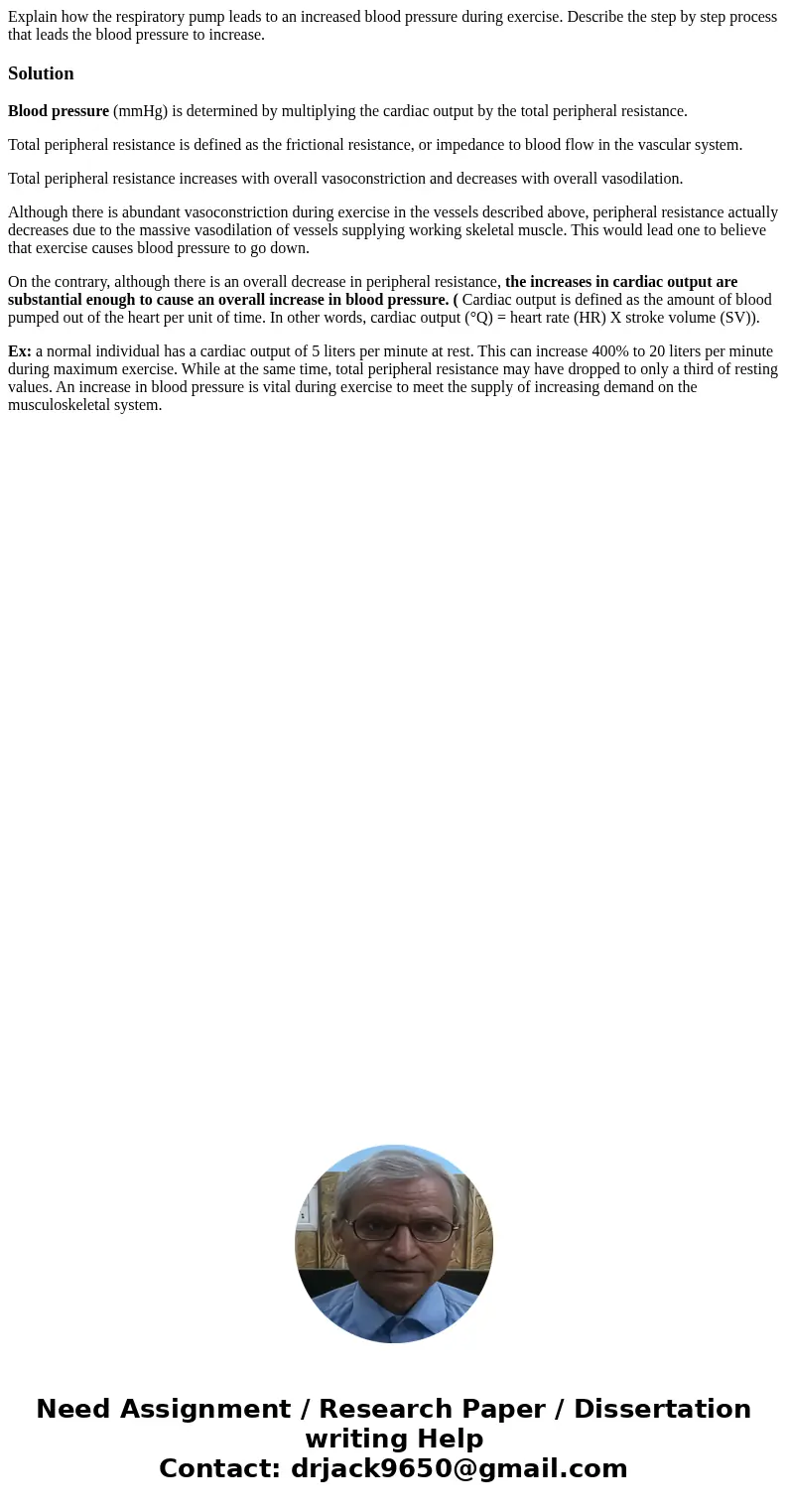Explain how the respiratory pump leads to an increased blood
Explain how the respiratory pump leads to an increased blood pressure during exercise. Describe the step by step process that leads the blood pressure to increase.
Solution
Blood pressure (mmHg) is determined by multiplying the cardiac output by the total peripheral resistance.
Total peripheral resistance is defined as the frictional resistance, or impedance to blood flow in the vascular system.
Total peripheral resistance increases with overall vasoconstriction and decreases with overall vasodilation.
Although there is abundant vasoconstriction during exercise in the vessels described above, peripheral resistance actually decreases due to the massive vasodilation of vessels supplying working skeletal muscle. This would lead one to believe that exercise causes blood pressure to go down.
On the contrary, although there is an overall decrease in peripheral resistance, the increases in cardiac output are substantial enough to cause an overall increase in blood pressure. ( Cardiac output is defined as the amount of blood pumped out of the heart per unit of time. In other words, cardiac output (°Q) = heart rate (HR) X stroke volume (SV)).
Ex: a normal individual has a cardiac output of 5 liters per minute at rest. This can increase 400% to 20 liters per minute during maximum exercise. While at the same time, total peripheral resistance may have dropped to only a third of resting values. An increase in blood pressure is vital during exercise to meet the supply of increasing demand on the musculoskeletal system.

 Homework Sourse
Homework Sourse